Occupational safety training in the logistics industry
99,000 ₫
Note: The above price is calculated per person, prices may fluctuate depending on the number of participants in the course and market movements. For more accurate price support, please refer to the price list or contact our consulting staff directly.
The Logistics Industry Safety Training course is a course that provides knowledge of Group 3 occupational safety. The course will raise awareness of how to prevent workplace accidents for participants. Accordingly, the occupational safety training content is closely aligned with Article 18 of Decree 44/2016/ND-CP.
Table of Contents
Toggle1. Overview of the logistics industry
a. What is the logistics industry?
The logistics industry is an important field in business and supply chain management. It includes all activities related to the transportation, storage, and management of goods from the point of origin to the destination.
The logistics industry plays a crucial role in ensuring effective connections among stakeholders in the supply chain and meeting market demands. It helps optimize operations, minimize time, cost, and waste, while providing safe, reliable, and quality transportation and storage services for customers.

b. Types of vehicles in the logistics industry
In the logistics industry, various types of vehicles are used to transport goods from the point of origin to the destination. Below are some main types of vehicles in logistics:
- Truck: Trucks are road transport vehicles. They come in different sizes and capacities to match the type of goods and transport distance.
- Specialized vehicles: These are specially designed vehicles for specific goods, such as cranes for heavy cargo, refrigerated trucks for frozen goods, chemical trucks for hazardous materials, etc.
- Ship: Ships are used for transporting goods across oceans or large rivers. They can carry large volumes and are often used in international shipping.
- Airplane: Airplanes are fast and efficient means of transporting goods by air. They are often used for urgent shipments or those with specific delivery timelines.
- Bicycles and motorcycles: In urban areas, bicycles and motorcycles are used to transport small goods and can move flexibly in heavy traffic.
- Tractor-trailers: Tractor-trailers are used for transporting containers and large goods on roads. They can carry heavy loads and are flexible in coupling and detaching trailers.
- Fire trucks and ambulances: In emergencies, fire trucks and ambulances may be used for transporting goods and providing relief services.

c. Typical enterprises in the logistics industry
Here are some typical enterprises in the logistics industry in Vietnam:
- Vietnam Post: Vietnam Post is the express delivery and postal service company of Vietnam. They provide domestic and international shipping services, including express delivery and parcel transport.
- Gemadept Corporation: Gemadept is one of the leading logistics companies in Vietnam. They provide sea transport, domestic and international shipping, warehousing, supply chain management, and other logistics services.
- Transimex Corporation: Transimex is a multinational logistics company with an extensive network in Vietnam. They provide transportation, forwarding, warehousing, and supply chain management services.
- Vinafco Joint Stock Corporation: Vinafco is a leading logistics company in Vietnam specializing in road transport, container transport, and related logistics services.
- Indo Trans Logistics Corporation (ITL): ITL is one of the top logistics companies in Vietnam, specializing in road transport, multimodal freight, and supply chain management.
- Saigon Newport Corporation: Saigon Newport is one of the largest maritime transport and port operators in Vietnam. They manage and operate major ports such as Saigon Port, Cat Lai Port, and Tan Cang International Port.
- Ceva Logistics Vietnam: Ceva Logistics is a global logistics company with operations in Vietnam. They provide transportation, warehousing, supply chain management, and value-added services.
These are just some typical enterprises in Vietnam’s logistics industry. This sector includes many other companies and organizations that also play an important role in providing diverse and quality logistics services.

d. Specific activities in the logistics industry
In the logistics industry, activities include:
- Transportation: The process of moving goods from production to consumption. It can be done by road, rail, air, sea, or multimodal transport.
- Storage: Includes warehouse management and storage of goods. This ensures goods are preserved and managed efficiently during transportation and before delivery to customers.
- Supply chain management: Managing the entire step-by-step process of the supply chain, from procurement, production, warehousing, and transport to customer distribution. The goal is to optimize operations, minimize time and cost, and ensure quality and customer satisfaction.
- Information management: Includes collecting, processing, and analyzing data about goods, transportation, warehousing, and related activities. Information management plays an important role in strategic decision-making and monitoring logistics effectiveness.
e. Products in the logistics industry
In the logistics industry, diverse products and services are provided to meet customer needs and manage the supply chain. Below are some common products and services in logistics:
- Freight transport: Includes road, air, sea, and rail freight services. Logistics companies provide transport solutions from origin to destination through planning, routing, and managing the transport process.
- Warehousing and warehouse management: Logistics companies provide storage and warehouse management services to ensure safe and efficient preservation of goods. Services include temporary storage, inventory management, packaging, and labeling.
- Supply chain management: Managing the entire supply chain from sourcing to the final customer. Logistics companies support planning, supply chain design, and managing aspects such as procurement, transportation, warehousing, and distribution.
- Packaging and labeling services: Logistics companies provide packaging and labeling services to ensure the safety and quality of goods during transport and storage. This includes packaging, marking, and quality compliance checks.
- Information management and technology services: Logistics companies provide IT solutions to enhance management and monitoring of logistics activities. This includes warehouse management systems, tracking and positioning systems, supply chain software, and data analytics solutions.
- Consulting and supervision services: Logistics companies provide consulting and supervision services for optimal supply chain and logistics management solutions. This includes consulting on logistics system design, process optimization, and monitoring operational efficiency.
2. Overview of occupational safety training in the logistics industry
a. What is occupational safety training in the logistics industry?
- Occupational safety training in the logistics industry consists of courses equipping workers with awareness on accident prevention. Accordingly, workers directly engaged in logistics belong to group 3.
- The safety training course helps workers identify and avoid hazards, minimizing risks of occupational accidents during work.
REGISTER FOR OCCUPATIONAL SAFETY TRAINING SERVICE
b. Training duration
Initial safety training duration
- Total training duration is at least 24 hours, including examination time.
- 8 hours of theoretical study on the system of policies and laws on occupational safety and hygiene
- 8 hours of theoretical study on basic knowledge of occupational safety and hygiene
- 4 hours of theoretical study on specialized training content
- 2 hours of practical study on specialized training content
- 2 hours of theoretical examination at the end of the training course
The safety training center will arrange the schedule into multiple sessions depending on the working time arrangement for employees. Typically, there will be 6 training sessions, the course will last for 3 days, provided that the manufacturing enterprise can arrange continuous training time.
Periodic safety training duration
- Before the occupational safety card expires, if employees want to renew it, they must attend a periodic occupational safety training course, with periodic safety training duration being at least 50% of the initial training duration.
Explanation: the total duration of periodic occupational safety training is at least 12 hours, including examination time. After completing the periodic training course and passing the required examination, employees will be reissued or extended their occupational safety card.
c. Training course content
| No. | TRAINING CONTENT | TRAINING DURATION (HOURS) | |||
| Total | Including | ||||
| Theory | Practice | Examination | |||
| I | System of policies and laws on occupational safety and hygiene | 8 | 8 | 0 | 0 |
| 1 | Overview of the system of legal documents on occupational safety and hygiene. | 6 | 6 | ||
| 2 | System of standards and technical regulations on occupational safety and hygiene. | 1 | 1 | ||
| 3 | Specific regulations of state management agencies on occupational safety and hygiene when constructing new facilities, expanding, or renovating works and establishments for producing, using, storing, preserving, and inspecting types of machinery, equipment, materials, and substances requiring strict safety and hygiene conditions. | 1 | 1 | ||
| II | Basic knowledge of occupational safety and hygiene | 8 | 8 | 0 | 0 |
| 1 | Basic knowledge of hazardous and harmful factors in the workplace. | 4 | 4 | ||
| 2 | Methods to improve working conditions. | 1 | 1 | ||
| 3 | Safety culture in production and business. | 1 | 1 | ||
| 4 | Rights and obligations of employers and employees; policies and regimes on occupational safety and hygiene for employees; functions and tasks of the occupational safety and hygiene network. | 1 | 1 | ||
| 5 | Regulations on occupational safety and hygiene, safety signs, instructions, and the use of safety equipment, personal protective equipment; professional skills in first aid for occupational accidents, and prevention of occupational diseases. | 1 | 1 | ||
| III | Specialized training content | 6 | 4 | 2 | 0 |
| General knowledge of types of machinery, equipment, substances generating hazardous and harmful factors; risk analysis, assessment, and management regarding occupational safety and hygiene; safe working procedures with machinery, equipment, and substances requiring strict safety and hygiene conditions. | 6 | 4 | 2 | ||
| IV | Final examination of occupational safety training course | 2 | 2 | 0 | 0 |
| Total | 24 | 22 | 2 | ||
See more training content of 6 groups
d. Occupational safety card
After completing the occupational safety training course and passing the examination, employees will be issued an occupational safety card (commonly referred to as occupational safety certificate group 3).
The group 3 safety card will clearly display information such as full name, date of birth, job title, and specific working environment. It also includes training duration, red stamp, and the authorized signature confirming course completion.
According to the safety card issuance regulations stated in clause 2 of article 24 of Decree 44/2016/ND-CP, there are 2 cases:
- In case the employer and the employee have a labor contract, the employer must sign, stamp, and seal the safety card for the group 3 trained employee after completing the training course and passing the examination from the occupational safety training unit.
- In case of freelancers or seasonal workers without a labor contract, the training unit must sign, stamp, and seal the safety card for the employee after completing the training course and passing the examination from the occupational safety training unit.

3. Identifying hazards for employees working in the logistics industry
The logistics industry has several potential hazards for employees. Below are some common hazards that workers may encounter in this industry:
- Transportation and movement: Employees in the logistics industry often work in a mobile environment, including driving, loading and unloading goods, and transporting items by various vehicles. Hazards may include traffic accidents, injuries from heavy lifting, and risks of working in hazardous environments.
- Physical and material hazards: Workers in logistics may handle and move heavy, bulky, or unsafe goods. This can lead to physical injuries such as slips, falls, collisions, or more severe accidents causing pain and injury.
- Storage and handling of hazardous materials: Some logistics sectors involve hazardous materials such as chemicals, restricted substances, or flammable explosives. Workers must strictly follow safety regulations to avoid risks such as explosions, environmental pollution, and health damage.
- Work environment: Distribution centers, warehouses, and ports may have unsafe environments, including noise, smoke, dust, toxic gases, extreme temperatures (hot or cold). These factors can cause stress, fires, nervous system damage, environment-related diseases, and other health issues.
- Tools and equipment: During work, employees may use tools and equipment such as lifts, forklifts, machinery, and hand tools. Improper or unsafe use may cause serious injuries, including collisions, trips, or being trapped.
- Psychological workload: The logistics industry may require employees to work under pressure, with tight schedules and fast response demands. This can cause stress, fatigue, and negatively affect employees’ mental health.
4. Safety measures for workers in the logistics industry
To ensure safety for workers in the logistics industry, below are some important safety measures that companies and workers can apply:
- Training and guidance: Provide comprehensive training and guidance on occupational safety, including safe working procedures, proper use of personal protective equipment, and risk management. Ensure that all employees understand and comply with safety rules.
- Use of personal protective equipment (PPE): Ensure that workers are provided with and properly use personal protective equipment such as helmets, safety glasses, gloves, safety shoes, masks, reflective vests, depending on job requirements.
- Risk management and health protection: Assess hazards and risks in the working environment and design preventive measures such as providing safety notices, signage, and restricted access to hazardous areas. At the same time, ensure health protection measures such as regular health check-ups and necessary medical services.
- Hazardous materials management: Apply safety regulations and procedures for the transportation, storage, and handling of hazardous materials. Ensure compliance with rules on preservation, packaging, labeling, and proper disposal of hazardous substances.
- Management of tools and equipment: Regularly maintain, inspect, and repair tools and equipment used in the workplace to ensure they operate safely and effectively. At the same time, ensure that workers are trained and use them properly as required.
- Regularly organize occupational environment monitoring in factories and enterprises, collect and analyze harmful factors to workers, and then adjust to reduce hazards to prevent occupational diseases.

5. Types of accidents in the logistics industry
In the logistics industry, there are several common types of accidents that workers may encounter. Below are some accident types in the logistics industry:
- Traffic accidents: Workers in logistics often transport goods using vehicles such as trucks, forklifts, hand trucks, and cranes. Traffic accidents may occur due to collisions, overturning, impacts, or vehicle breakdowns, causing serious injuries to drivers and other employees.
- Physical injuries: During loading, unloading, moving, or storing goods, workers may encounter physical accidents such as falls, slips, collisions with obstacles, or heavy materials. This may lead to injuries, fractures, bruises, cuts, or more severe injuries.
- Impact and collisions: Jobs related to transporting and storing goods may face the risk of collisions or falling from heights. When goods fall or collide, they can cause injuries, concussions, impact wounds, or spinal injuries.
- Fires and chemical leaks: In distribution centers and warehouses, the risk of fire, explosion, and chemical leaks may occur. These incidents may cause fires, explosions, burn injuries, environmental pollution, or harm from hazardous chemicals.
- Accidents with machinery: The logistics industry frequently uses machinery and equipment to handle goods such as lifts, forklifts, conveyors, and packaging machines. Accidents may occur if workers do not follow safety rules when working with machinery, causing serious injuries such as entrapment, crushing, cuts, or imbalance.
- Stress and fatigue: The logistics industry may involve a high-pressure working environment with tight schedules and quick response requirements. This can lead to stress, fatigue, tension, and affect the psychological and mental health of workers.
6. Benefits of occupational safety training in the logistics industry
An Toan Nam Viet provides your business with excellent benefits after completing occupational safety training courses in accordance with Decree 44/2016/ND-CP on occupational safety and hygiene. Companies, enterprises, and factories will receive:
- Workers can recognize potential risks of occupational accidents and take preventive measures to avoid them.
- Businesses can establish preventive measures in production, operation, and maintenance processes.
- Minimize costs when safety risks occur in the workplace.
- Uninterrupted production helps increase labor productivity and product quality.
- Comply with labor safety regulations and avoid legal risks.
- Create credibility and professionalism in all aspects, thereby enhancing the brand reputation for your business.
The training courses of An Toan Nam Viet are the solution to prevent and protect individuals from external factors, helping them avoid dangers that may lead to injuries or even fatalities.
REGISTER FOR OCCUPATIONAL SAFETY TRAINING SERVICE
7. Customer feedback after completing the training course
An Toan Nam Viet has many years of experience in accompanying numerous businesses across Vietnam in general and southern provinces in particular. This responsibility is extremely valuable to us, which is why An Toan Nam Viet’s occupational safety training is increasingly focused on professionalism. The driving force for An Toan Nam Viet’s strong growth today comes from positive feedback and constructive suggestions from businesses. Below are feedbacks from our partners that we have served.
BAC NAM E&C CONSTRUCTION INVESTMENT JOINT STOCK COMPANY
“This was the first time using An Toan Nam Viet’s service, and I was very surprised by the 24/7 enthusiastic support from the consulting team. The training class organization was very quick and convenient for our company. Thank you very much, An Toan Nam Viet!”
HOA DAT CONSTRUCTION AND TRADING JOINT STOCK COMPANY
“An Toan Nam Viet’s service has greatly helped us simplify occupational safety and complete safety records for the working process. The consulting team is enthusiastic and timely in answering our questions. 5 stars for An Toan Nam Viet.”
See more customer interviews after using the service of An Toan Nam Viet
8. Occupational safety training capacity of An Toan Nam Viet
An Toan Nam Viet is a reputable and high-quality occupational safety training center in Vietnam today. With continuous occupational safety training sessions held at production workshops, factories, or construction sites across the country (63 provinces and cities in Vietnam).
REGISTER FOR OCCUPATIONAL SAFETY TRAINING SERVICE
Occupational safety training license
- An Toan Nam Viet has been inspected and granted certification of eligibility for occupational safety and hygiene training activities by the Department of Safety under the Ministry of Labor – Invalids and Social Affairs. This further strengthens our occupational safety training capacity.

Training materials and lectures
- Before occupational safety training materials are included in occupational safety training courses, they are reviewed and verified to ensure accuracy and effectiveness when applied.
- Teaching methods of instructors are standardized according to An Toan Nam Viet guidelines, which are methods researched and developed by experts in occupational health and safety training to bring the highest learning efficiency to trainees.
Facilities
- Controlling classroom factors affecting the training process will increase teaching efficiency and learners’ knowledge absorption.
- Training support facilities are always arranged with spacious classrooms meeting standards for area, lighting, training equipment, etc.
9. Nationwide reputable occupational safety training center
At An Toan Nam Viet, we always put our dedication to occupational safety training as a top priority. For us, imparting knowledge of self-protection to workers so that they have safe skills for their livelihood journey is a contribution to building the country.
To ensure effective training, we carefully and meticulously prepare every detail, even the smallest ones. From preparing tools, teaching equipment, curriculum, documents, sound, and lighting.
Our occupational safety trainers are experts with many years of experience in the field. They even have research projects identifying hazards across all industries and ways to prevent them.
Lectures are drawn from practice and delivered vividly and understandably to workers. These factors help workers feel comfortable during the learning period and absorb the knowledge effectively. Of course, the knowledge imparted is always aligned with Decree 44/2016/ND-CP.
From there, they can grasp many preventive measures and ways to protect themselves, and apply them most appropriately in actual work.
Our occupational safety training center is proud to provide reputable, professional occupational safety training services nationwide with the following advantages:
- Competitive training costs with guaranteed quality.
- Flexible training schedule according to company production needs.
- Fast certification procedures in compliance with the law.
- Experienced instructors with many years of expertise.
- Controlled classrooms to improve teaching efficiency and knowledge absorption.
- Training content tailored to enterprise occupational safety.
- An Toan Nam Viet works dedicatedly and professionally to provide customers with accurate and prompt support.

10. Additional references for occupational safety training in the logistics industry
- Occupational safety training material set
- Occupational safety materials for the logistics industry
- Occupational safety training tests
1 review for Occupational safety training in the logistics industry
No comments yet

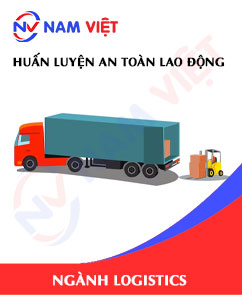
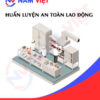




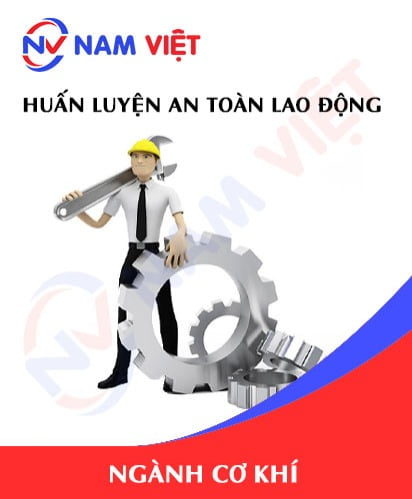
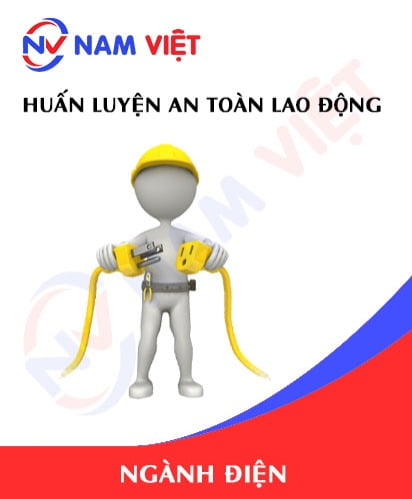

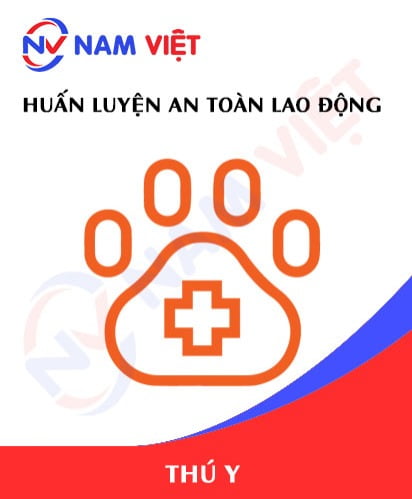

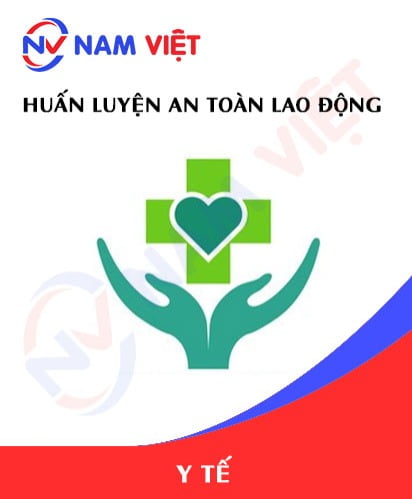


caotiensyhung.07081999
nhanh chóng và lẹ làng!